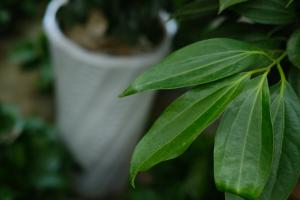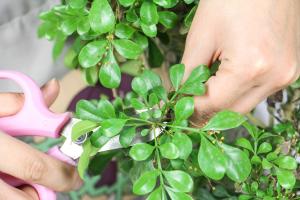How to Care for a Bonsai Plant
Bonsai plants are a delicate and beautiful addition to any home or office. However, they require a bit of maintenance to thrive. With proper care, your bonsai can live for many years and bring enjoyment to your space. Here are some tips on how to care for a bonsai plant:
Choosing the Right Pot and Soil
Choosing the right pot and soil is essential for the health of your bonsai plant. The pot should be slightly larger than the root ball and have drainage holes to prevent water from pooling. The soil should be well-draining and should include a mix of organic and inorganic components. Avoid using garden soil, as it can hold too much moisture and suffocate the roots.
Watering Your Bonsai Plant
Watering your bonsai plant is one of the most critical aspects of caring for it. The amount of water your bonsai needs will depend on the size of the tree and the soil it is planted in. In general, you should water your bonsai when the top inch of the soil is dry. When watering, make sure to saturate the entire root ball and allow the water to drain out the bottom of the pot. Do not let the bonsai sit in standing water, as this can lead to root rot.
Pruning and Shaping Your Bonsai
Pruning and shaping your bonsai is essential to maintain its shape and size. Use sharp scissors to trim away any unwanted growth and maintain the desired shape. When shaping your bonsai, be patient and take your time. It can take several years to achieve the desired shape, but the result is a beautiful and unique tree.
Fertilizing Your Bonsai Plant
Fertilizing your bonsai plant is essential to promote healthy growth and a vibrant color. Use a balanced fertilizer during the growing season, usually from early spring to late fall. Avoid fertilizing during the dormant season, as this can cause stress and damage to the tree. Apply the fertilizer sparingly and follow the manufacturer's instructions.
Protecting Your Bonsai from Pests and Diseases
Like all plants, bonsai trees are susceptible to pests and diseases. Keep an eye out for any signs of infestation, such as discolored leaves or visible insects. If you notice anything unusual, remove the affected parts of the plant and treat with a pesticide or fungicide specifically designed for bonsai trees.
In conclusion, caring for a bonsai plant requires patience, attention to detail, and a bit of knowledge. With the right pot and soil, proper watering, pruning, fertilizing, and pest control, your bonsai can live for many years and provide you with beauty and joy.

 how many times do yo...
how many times do yo... how many planted tre...
how many planted tre... how many pine trees ...
how many pine trees ... how many pecan trees...
how many pecan trees... how many plants comp...
how many plants comp... how many plants can ...
how many plants can ... how many plants and ...
how many plants and ... how many pepper plan...
how many pepper plan...





























